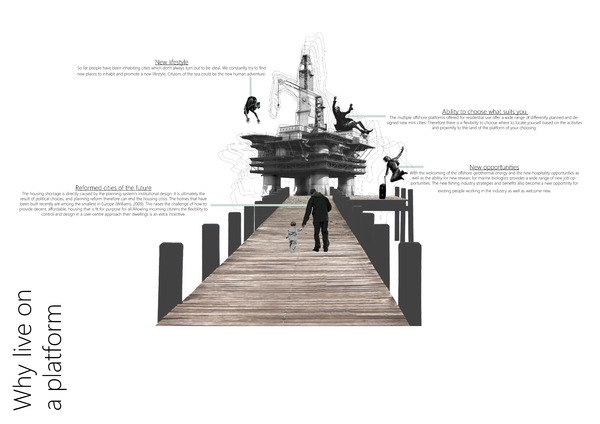The brief was emphatic on the reintroduction of the North Sea as an emblem of a Net Zero future. Similarly, the project had to reflect a future in which the towns of Grimsby and Cleethorpes thrive economically and socially. By researching the best way to merge both objectives, I created a scenario in which the oil and gas industries become inexistent and the offshore platforms become utilised by the upcoming geothermal energy industry and as residential, commercial, and fishing developments. By establishing these new offshore communities, I allow the existing marine environment that has already developed under the surface of the offshore platforms to flourish, enhancing biodiversity. Secondly, recycling existing offshore infrastructure limits waste and prevents taxpayer money from being spent on the billion-pound process of decommissioning a platform. Back to the land, the transportation of tourists, trading, and locals to and from the platforms becomes the economic solution for both Grimsby and Cleethorpes.
The programme is separated into two: the commercial terminal, public to locals and ferries passengers with markets, restaurants, and a local shop and the last terminal, housing networking rooms which would regulate the offshore communities and transport as well as security checks and lounges. As part of the social agenda, a variety of communal spaces both on and next to the pier were provided as well as exhibiting local artwork. The pier was also designed to achieve operational net-zero by the integration of wind turbines, solar panels, a double-facade, passive ventilation aided with operable skylights and the use of seawater for heating and cooling.


